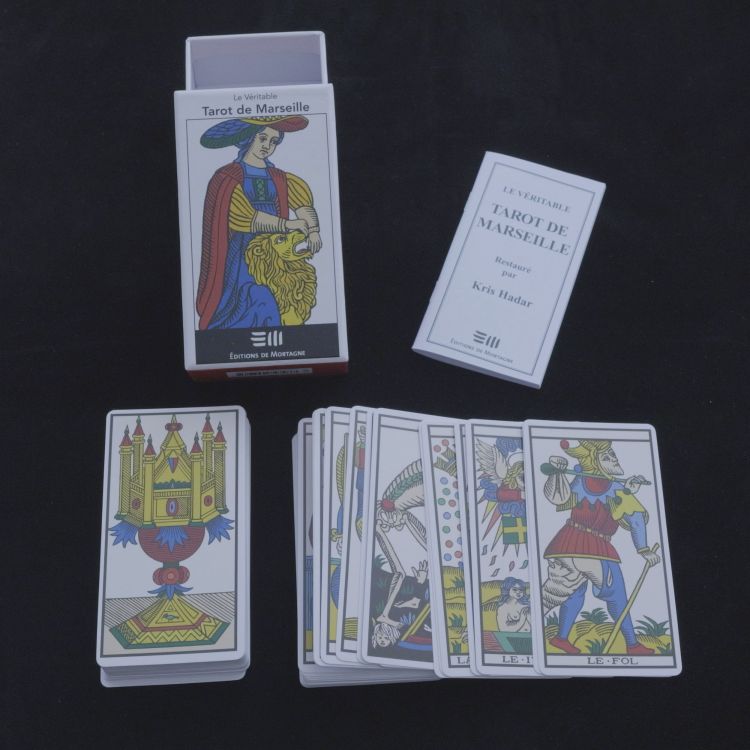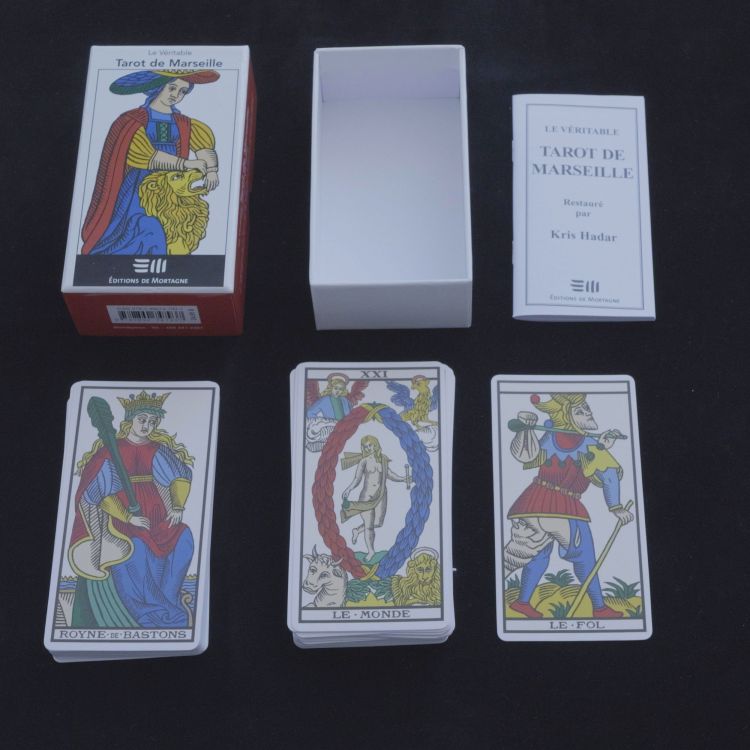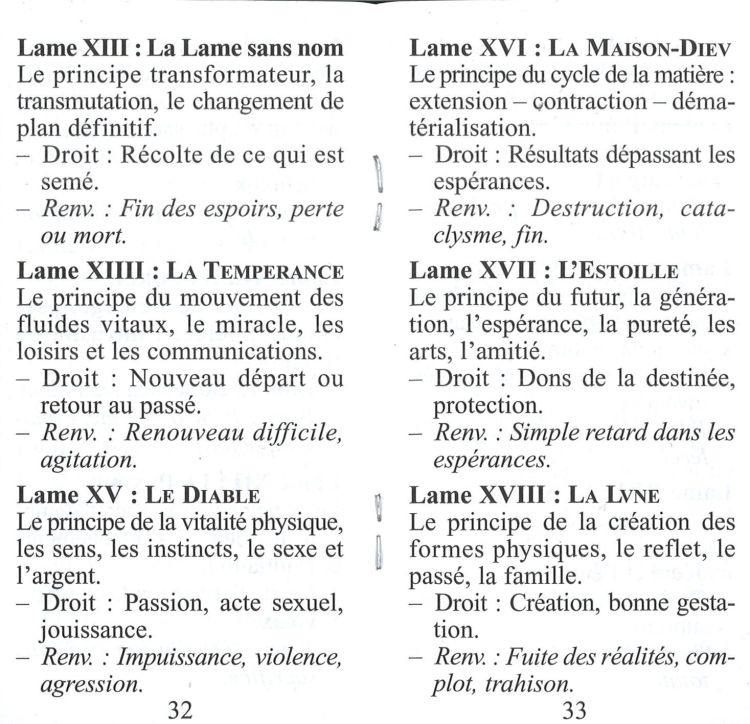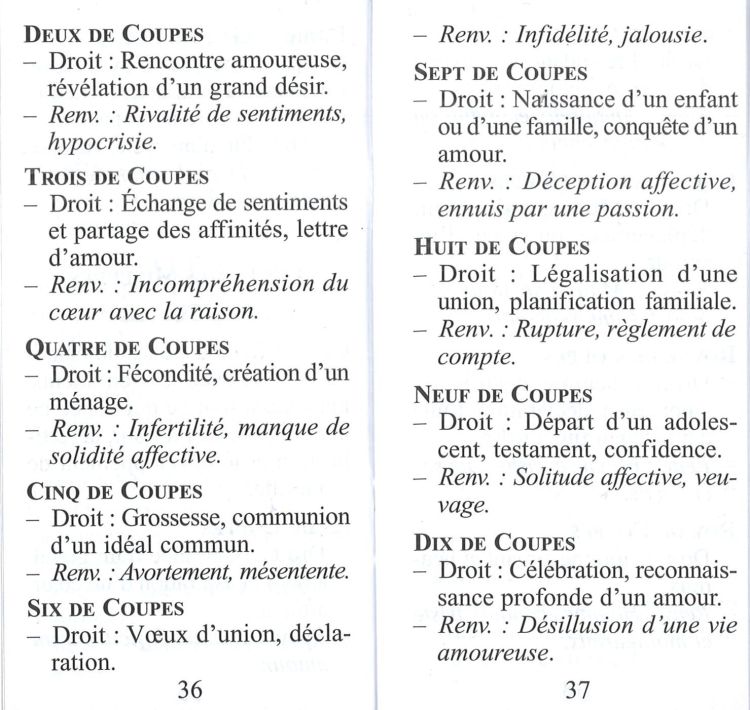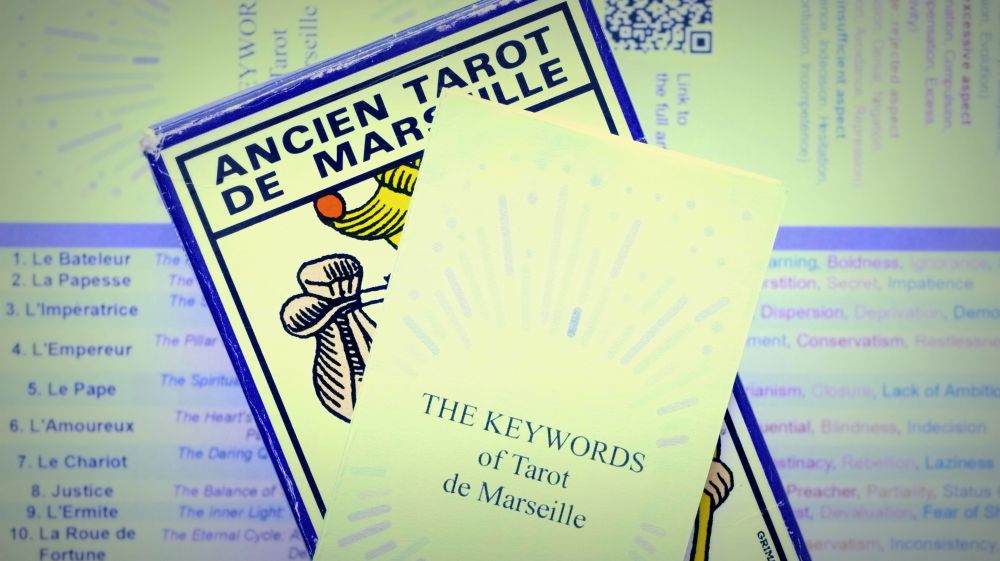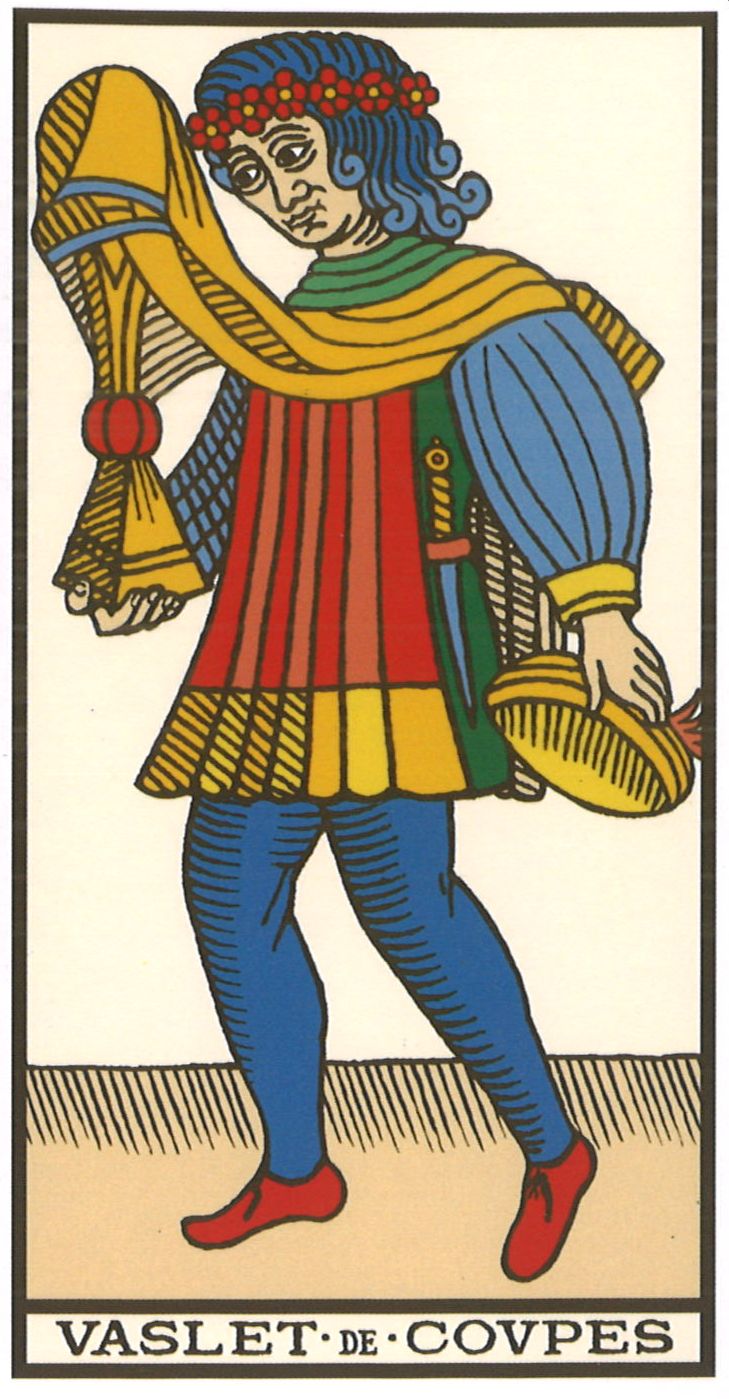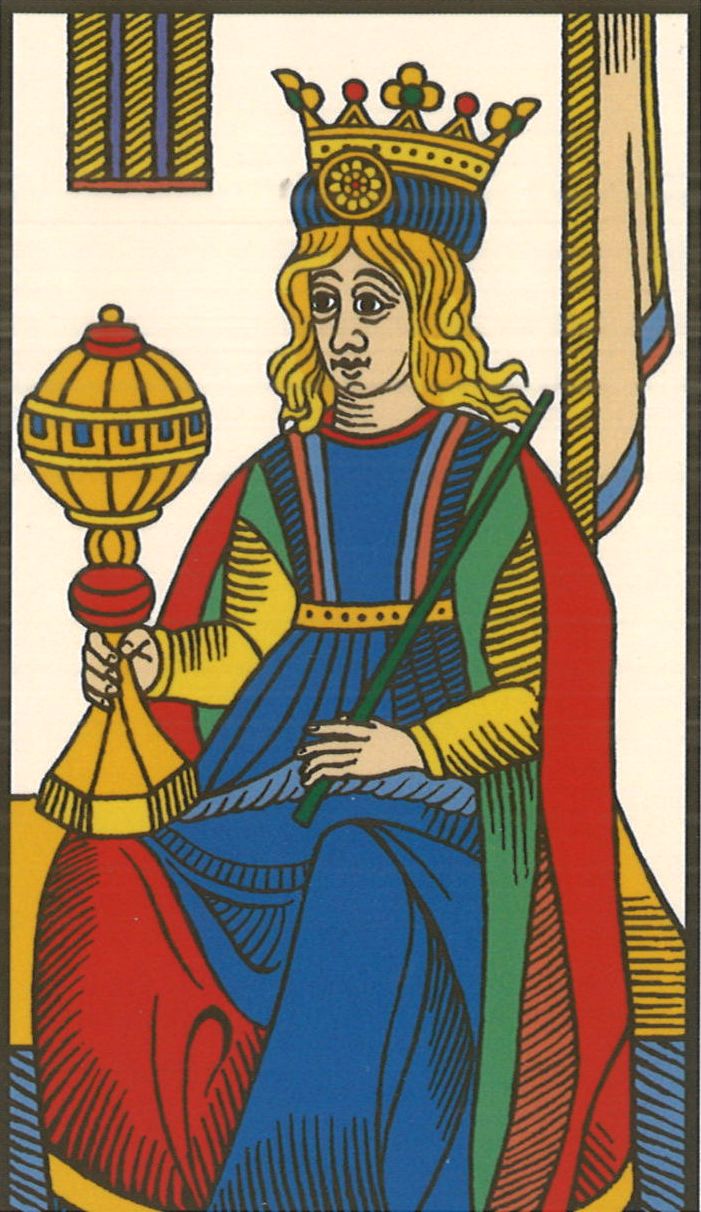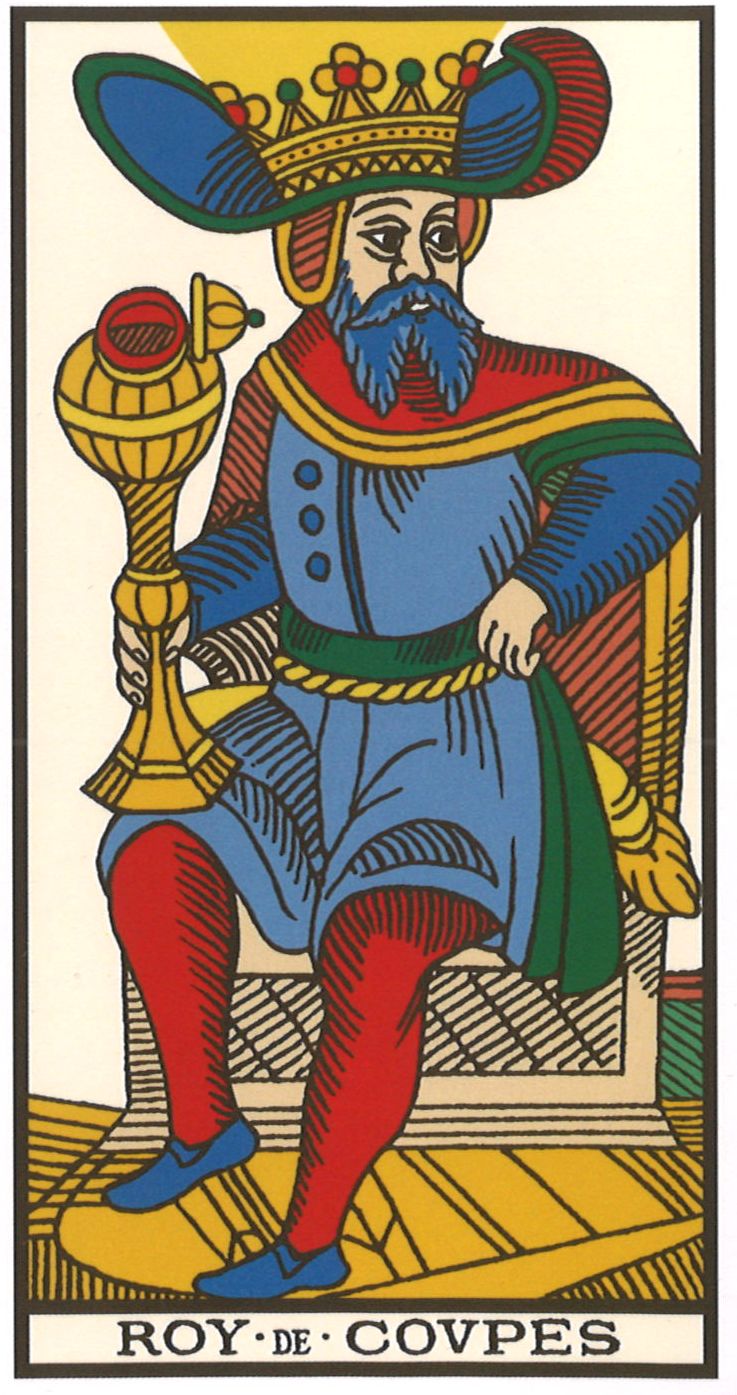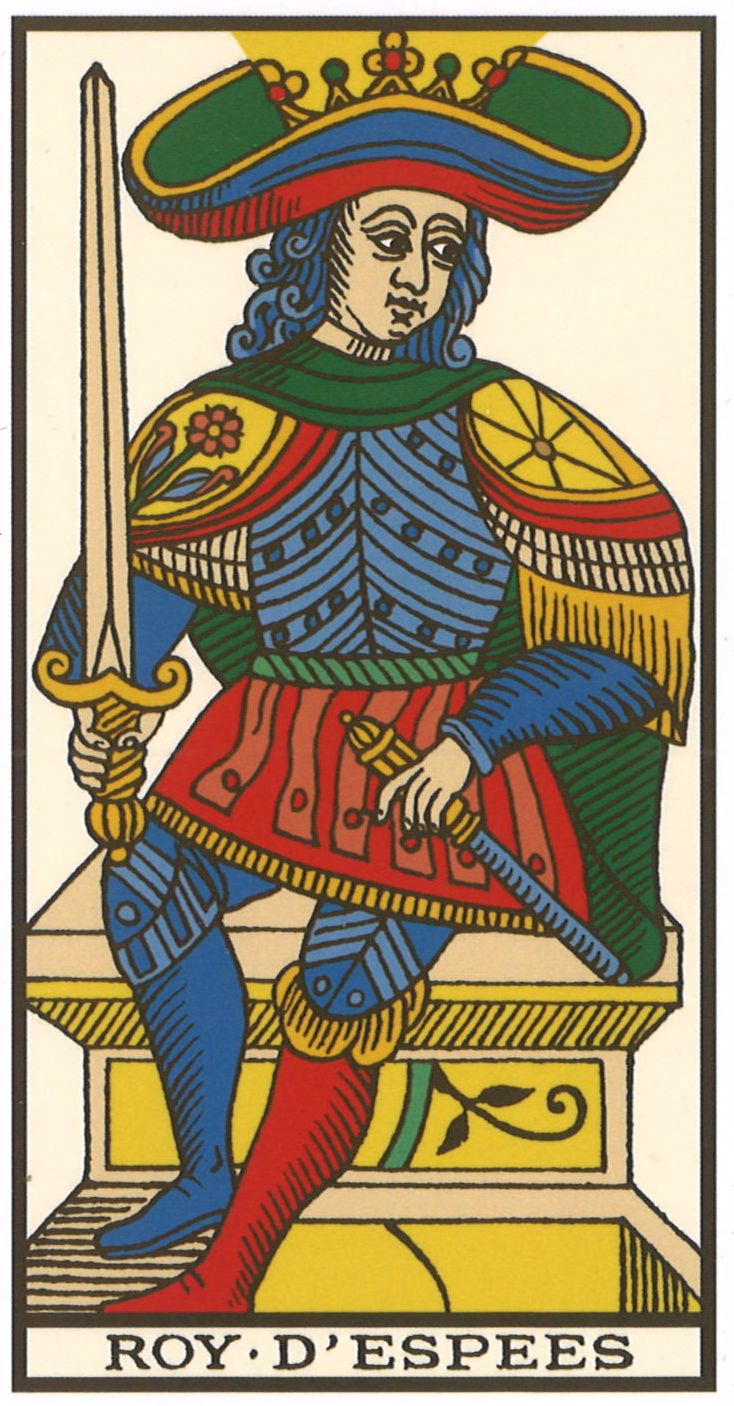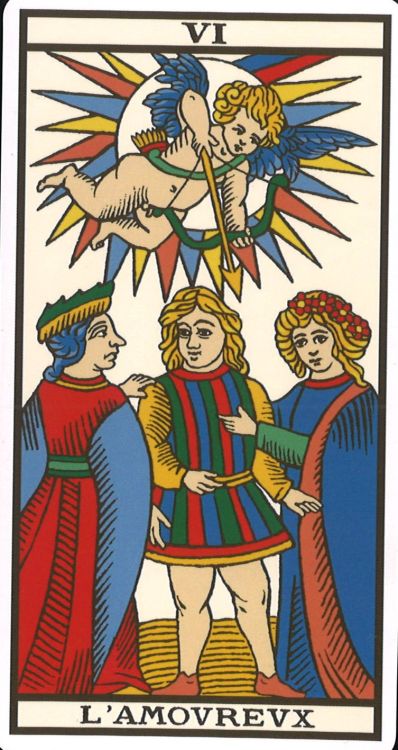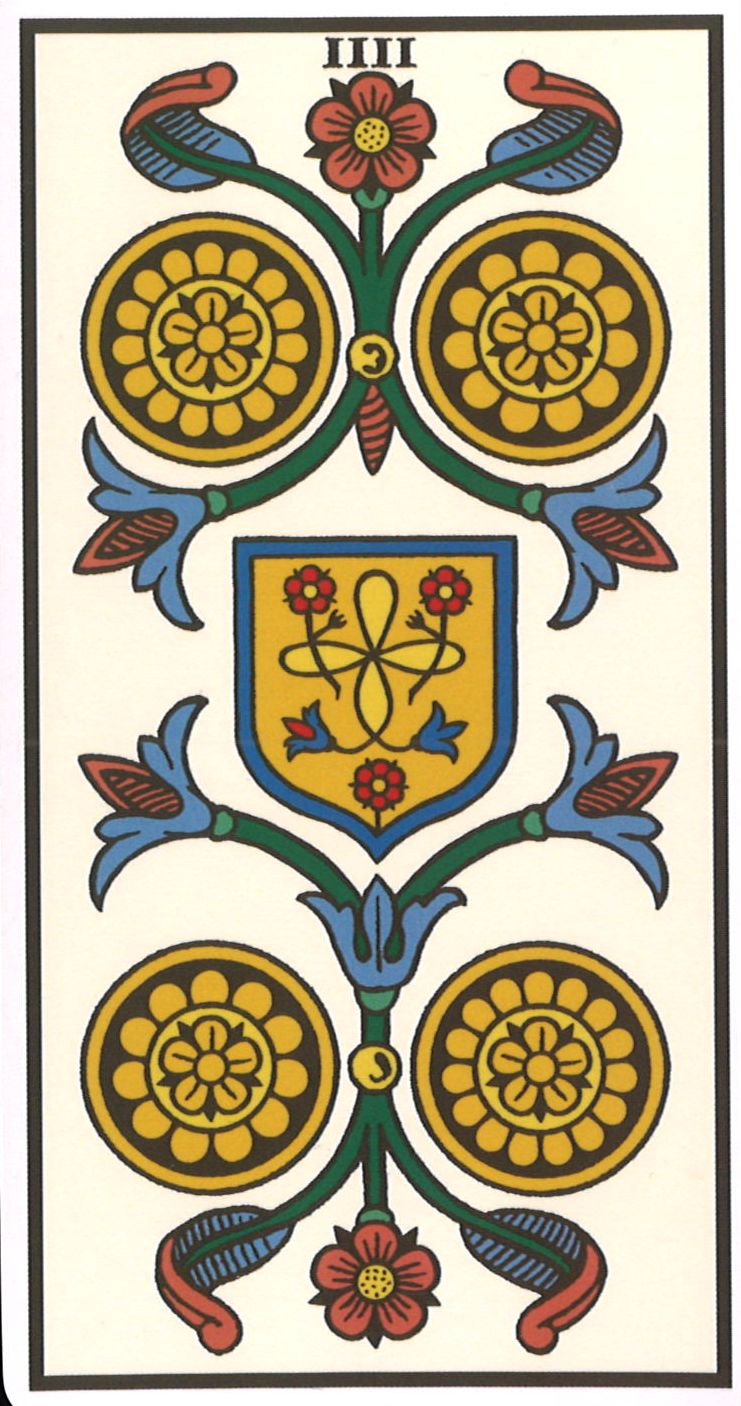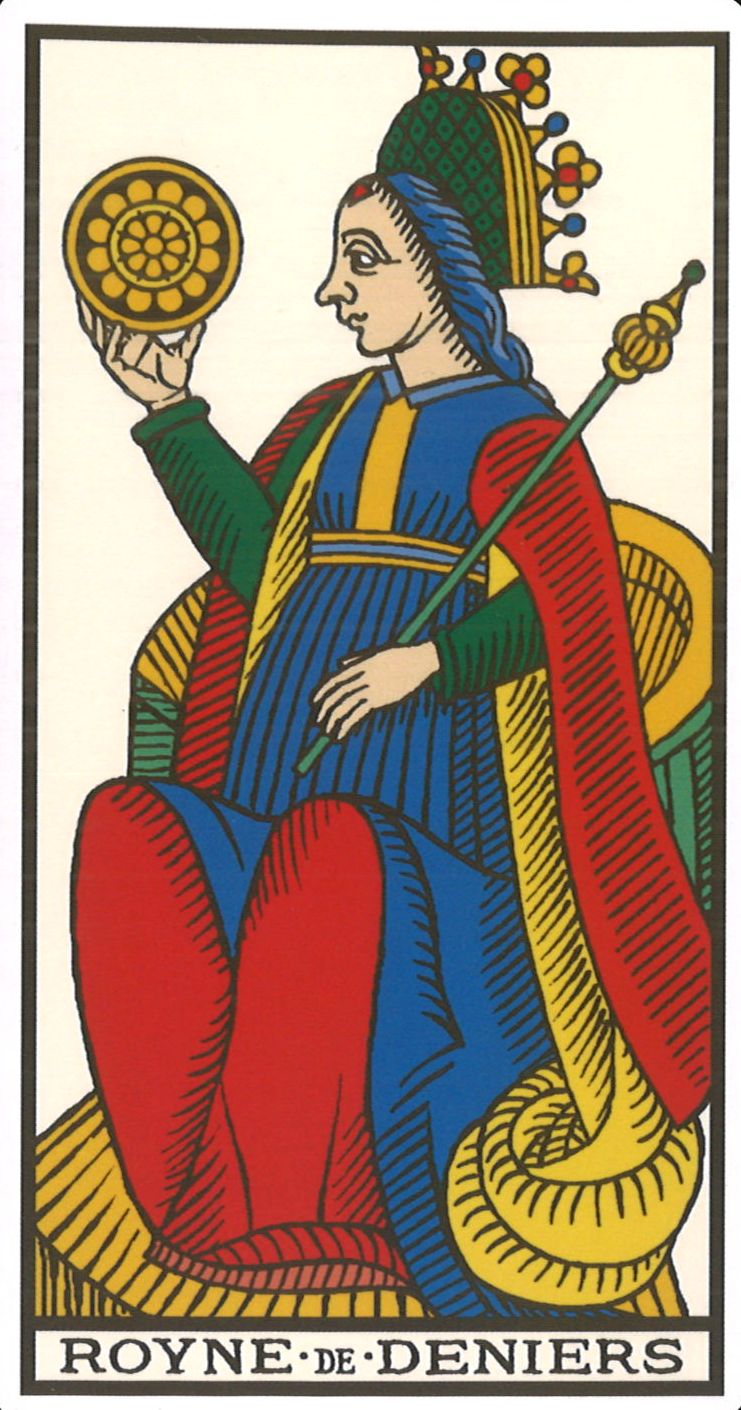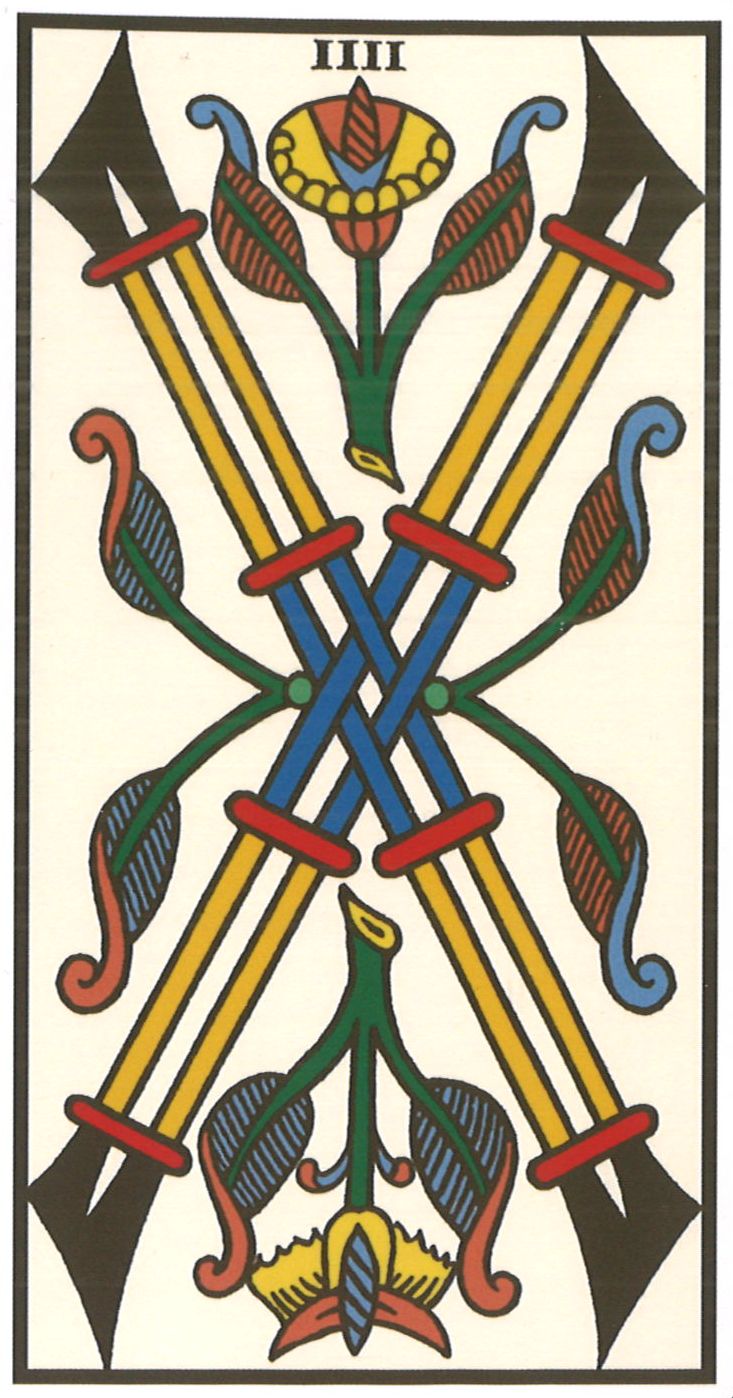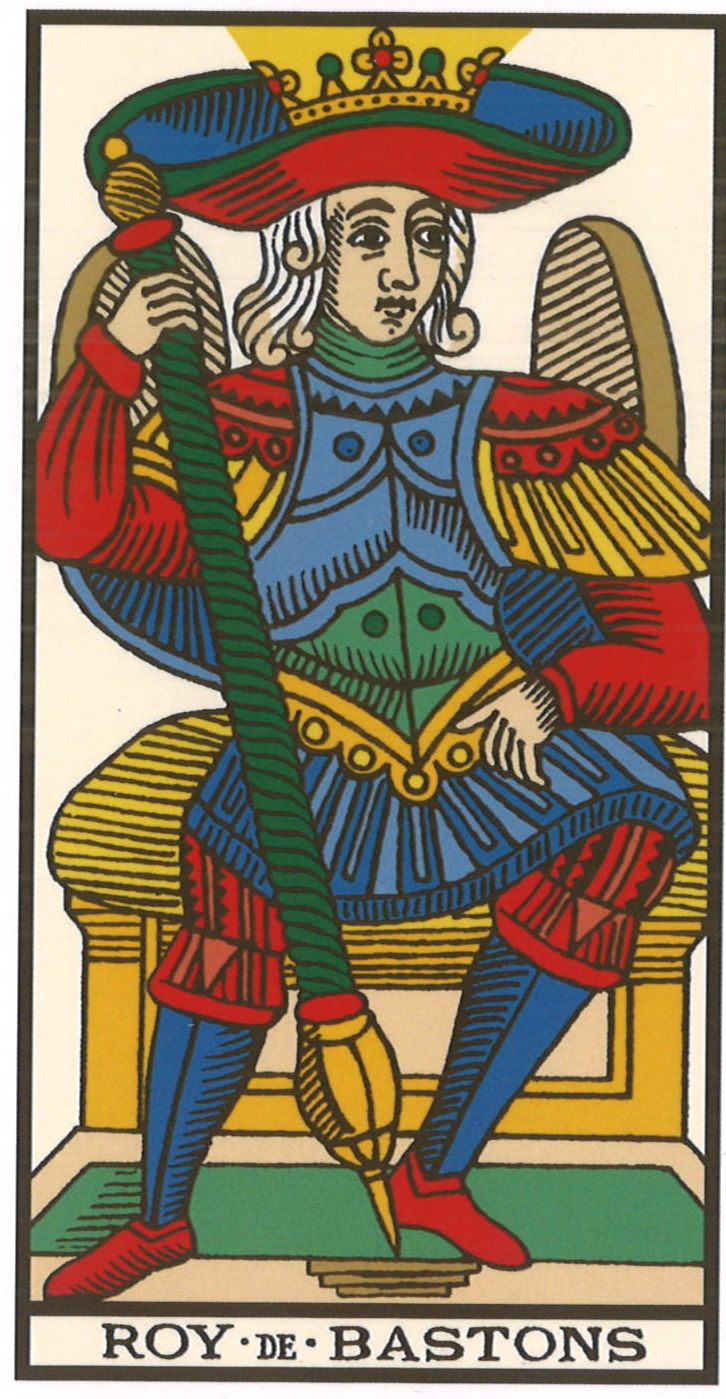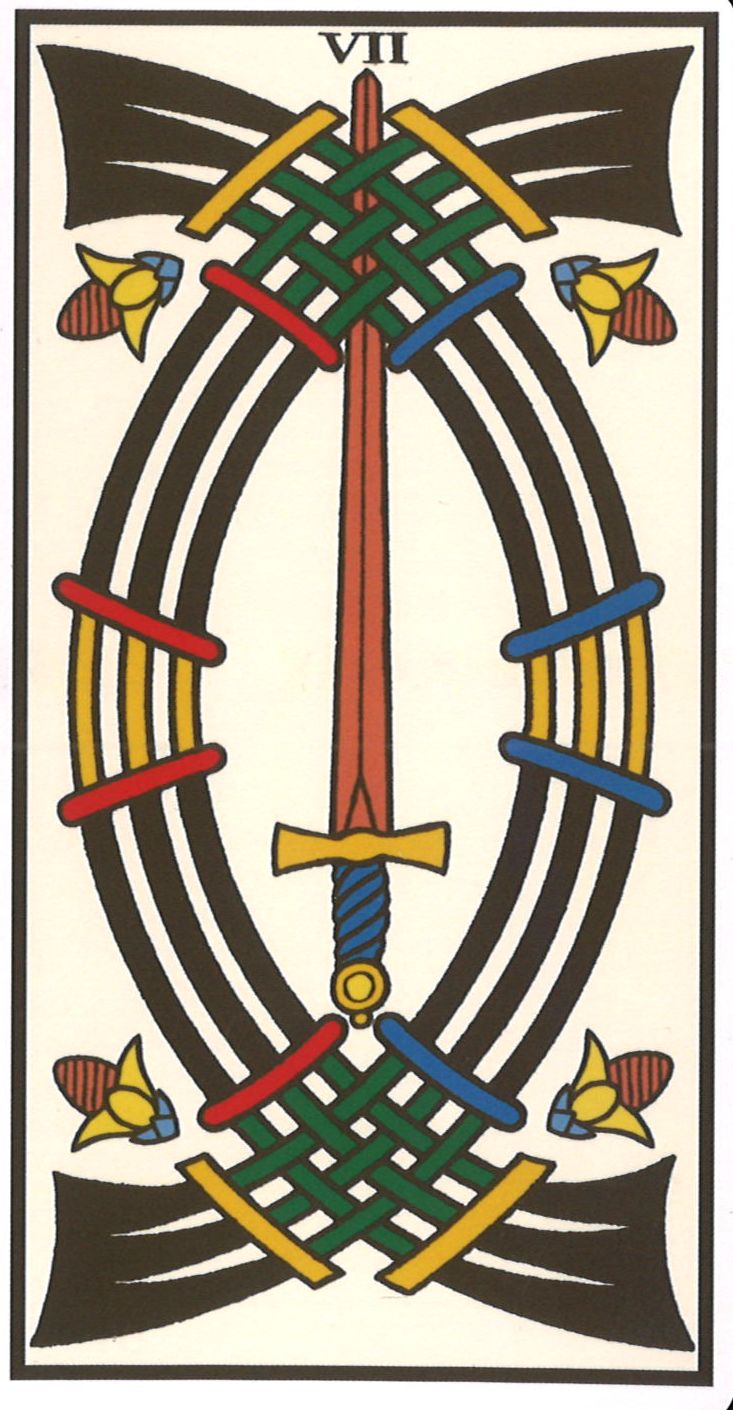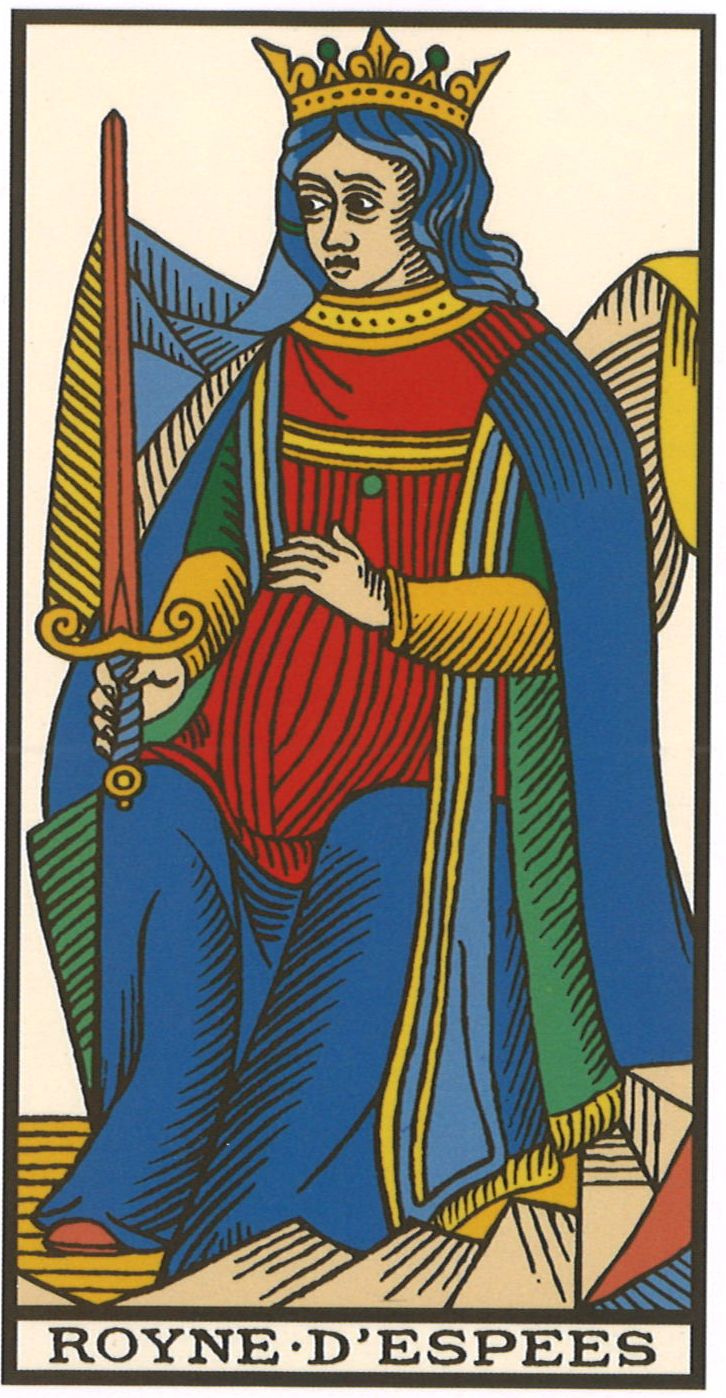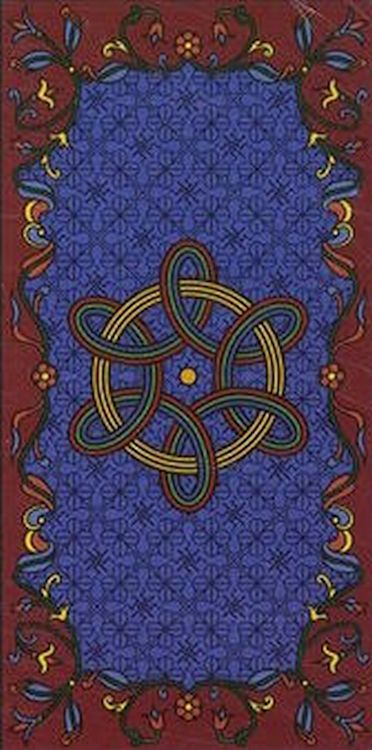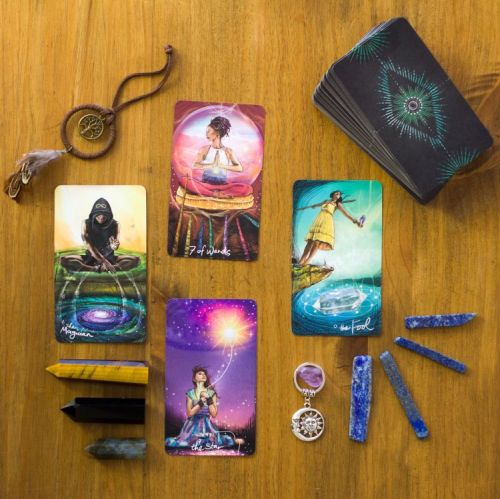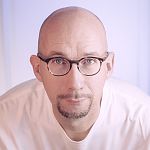The Kris Hadar Marseille Tarot offers a robust deck, with thick and well-laminated cards. However, this lamination, while ensuring great durability, makes the cards too sticky, complicating their handling. For some, this robustness could be a significant advantage, allowing the deck to be used in various environments: outdoors, at a café terrace, or even in the hands of children. But for others, this aspect can be a drawback during shuffling or more traditional use.
Regarding the iconography, this tarot takes a faithful approach to the tradition of Marseille Tarots, giving it a very classic aesthetic. However, one might regret a lack of innovation. Fans of the Grimaud Tarot by Paul Marteau will find here similarities that could appeal to them. On the other hand, those seeking a bolder or more modern reinterpretation of traditional tarots might be disappointed.
In terms of colors, the tones recall Marteau's choices, making it a continuation rather than a break in tradition. However, a more personal reinterpretation or a more distinct artistic signature from Kris Hadar would have been appreciated. This could have allowed the deck to stand out more among other Marseille Tarots (too often "Conver") available on the market.
As for my personal preference, I must admit that this tarot does not find a place in my daily use. Its very conventional nature places it in a kind of "outsider zone": neither a true historical tarot, rich in teaching, like the Jean Noblet Tarot or the Jean Dodal Tarot, nor a bold and creative contemporary deck, such as Wilfried Houdouin's Millennium Tarot. This overly classic "Type II Conver" positioning can be problematic for some collectors or cartomancers.
Nevertheless, I recognize that this tarot has its value. It is a good compromise for those looking for a sturdy deck to carry everywhere without risking damaging their more precious decks. It can also be an excellent option for those who wish to start with the Marseille Tarot without immediately focusing on historical or more revisited decks.
In conclusion, The Kris Hadar Marseille Tarot is a tool that deserves recognition but struggles to stand out. It is not an essential tarot, but its old-fashioned positioning (a tarot made nearly 30 years ago) could be more appealing to fans of the Grimaud style. For a novice audience looking for a Conver Tarot restored in an academic yet modern way, while this tarot by Kris Hadar is a serious candidate, I undoubtedly prefer the Yoav Ben Dov's CBD Tarot.
To learn more and deepen your knowledge of tarot, check out my article on the meanings of the 78 tarot cards or on the 22 Trumps (major arcana).
